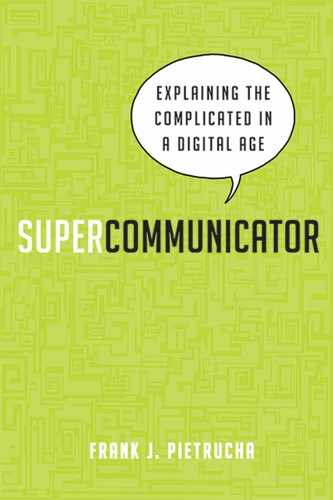Testimonials: A Supercommunicator's Win-Win
In 2002 the American public knew little about animal cloning and we needed real people—mentally stable, articulate, and intelligent individuals—to speak out on our behalf. I was working with my longtime colleague Suzanne Turner of Turner Strategies to help client Genetic Savings & Clone introduce the world's first cloned house pet. With our effort, CC, short for CopyCat, a brown tabby and white domestic short hair, would soon grace the cover of Newsweek and be featured on ABC's news program 20/20. We anticipated the American public wouldn't be entirely comfortable with the idea of pet cloning. They had all sorts of misconceptions about the science behind it.
“There's a mistrust of scientists and the scientific process,” noted our client Ben Carlson, GS&C's in-house marketing and communications guy. “It's difficult for popular culture to keep up with the science. That's why we see popular culture—movies and books—grappling with these issues and helping people process their fears by depicting these horrific scenarios.” Scientists in movies are usually depicted as the people creating the problems, not solving them. That means trouble for scientists when they try to explain something new. Looking back on CC's birth, Carlson reflects, “People were inclined to fear what we were doing and mistrusted us.”
It became clear that in order for the public to overcome misconceptions we had to talk to them about the science of animal cloning. We couldn't go too deep into the mechanics of cloning, but had to give enough information for them to realize “it's reproduction, not reincarnation.”13
The semi-scientific explanation was important to our media outreach, but just providing information about the process wasn't enough. Equally important was telling the stories of real Americans who wanted to clone pets. The pet owners, mostly dog people, told us they have or had a pet they thought was their perfect companion. The pet was ideally suited to them—often a dog of unknown parentage with qualities the owner treasured. You can't go to a breeder and get a dog that's “a breed of one.” Through cloning, GS&C would become the breeder of that distinctive breed. Pet enthusiasts were willing to pay a lot of money for a mutt that exhibited qualities similar to an original pet.
As we got close to CC's birth, we produced a series of short videos of pet owners who had already donated their dog or cat's DNA to GS&C. We gave them a platform to discuss, unscripted, their reasons for wanting their pet cloned. They delivered heartwarming testimony about how much they loved Rover or Fifi. They all described their pets as unique and told how they wanted not an exact replica of the animal, but a pet with similar characteristics.
The pet DNA donors were uniformly sane and articulate. They had sound reasons for wanting their dogs and cats cloned—and expressed them. The videos reflected their level-headedness, together with their passion for their pets. When CC was born, we offered their testimonials to newspapers, magazines, radio, and television. We tried to hook up local media with donors located in their region to make the story closer to home. The personal stories resonated with the media; not only did we get local coverage, but big-time global exposure on outlets like CNN.
Testimonials—from a communicator's perspective—serve as character references. They're statements that testify that the person making claims or explaining the science is credible. They're real people expressing thoughts that support the point you're trying to get across. In the case of GS&C, we couldn't use the pet DNA donors to explain science—they wouldn't have the credibility themselves to pull that off. However, they did us a tremendous service by assuring the public that GS&C wasn't a crazed organization about to unleash an evil plan. The testimonials grabbed people's attention with a warm story about pets and established our clients as good people. That gave us an opening to explain the science behind the experiment.
Testimonials are a personal favorite for good reason. They're like buying two supercommunicator tools for the price of one. You benefit from the storytelling technique as described in the last chapter, plus you benefit by humanizing your story with real experiences from real people. You can't beat that!
Tell stories of how real people came to understand—and ultimately embrace—your idea. In the case of GS&C, our testimonial team acted like a warm-up band at a concert. They got our audience relaxed and put in the right frame of mind to hear our story. Heartwarming narratives or claims of a product's effectiveness are powerful devices. Take a break from explaining the nuts and bolts of your operation and give them people they can identify with to help you build your case.
You, or the content pro you're working with, may benefit by bringing in a nonexpert third party to explain your complicated subject. You could be the definitive subject expert, the most knowledgeable person alive in a given field, but that doesn't guarantee success in explaining the complicated. People find value in hearing from folks just like them. They put themselves at greater ease listening to someone who's walked in their shoes. They could be a bit leery about the fancy technologist, professor, or scientist who seems just a bit removed from their daily lives. Often, our testimonial friends can't deliver our entire message, but they sure can give us a helping hand.

